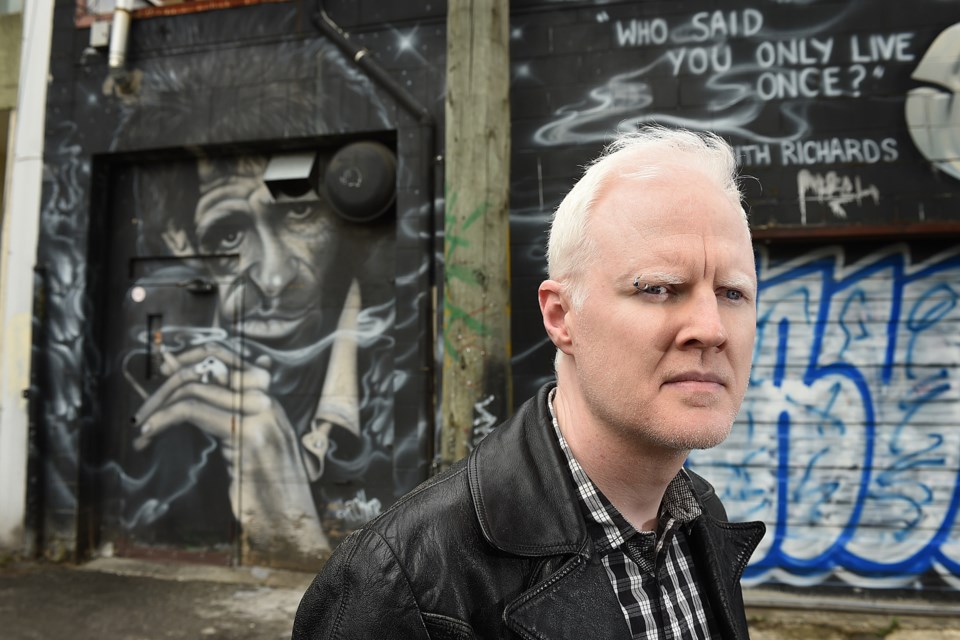The Grandview-Woodland Area Council isn’t convinced the East Side neighbourhood needs more density. That’s among the issues the resident group raised in its July 15 response to the recently released citizens’ assembly recommendations for Grandview-Woodland’s community plan.
GWAC is worried some recommendations will lead to the loss of affordable, three-storey walk-up apartment buildings in favour of expensive condos and that the prospect of community amenity contributions from developers is behind some recommendations for more development.
Jim Fraser is a member of the area council.
“I think it’s a really debateable point amongst everyone to what extent community amenity contributions should be used to fund social services,” he said. “Secondly, it’s a concern that the uses of CACs has become inverted, if you will… there’s a feeling now that it’s become more a negotiation about how much CAC the city can get from the developer and it’s a negotiation between how high and how much the CAC can be and that there’s very little or not enough concern for what the appropriate design for the community should be.”
GWAC maintains all levels of government should fully fund community amenities, but if CACs remain a key revenue source, communities should be involved in negotiating them.
The citizens’ assembly’s report, which council accepted in June and referred back to staff for analysis, outlined a total of 270 neighbourhood-wide, as well as sub-area, recommendations for the seven districts within Grandview-Woodland.
The recommendations, which aren’t binding on council, focused on themes ranging from housing to community well-being and health.
Mainly mid- and low-rise buildings, as well as one 12-storey building, were recommended around the Broadway-Commercial Drive SkyTrain Station rather than towers, which had been proposed two years earlier in the community plan’s controversial emerging directions.
The assembly called for some higher buildings along Hastings Street than were initially proposed in 2013, with heights of up to 15 storeys, with opportunities for 20 storeys, on the north side of Hastings between Clark and McLean drives. Between McLean and Commercial, it recommends up to 15 storeys on the north side and 12 on the south side. Proposed heights decline heading eastward towards Nanaimo.
GWAC member Garth Mullins calls the citizens’ assembly’s report a “fine start,” but the community needs to “dig into it.”
Mullins said the neighbourhood has traditionally been working class, but residents are being driven out by development, which will accelerate if some recommendations for rezoning are accepted.
“The community of East Vancouver heard about this idea for the city to expand towers around Grandview-Woodland two years ago and they angrily rejected them, so the citizens’ assembly happens and we get much of the same coming out of the other end of this thing,” he said. “We get allowances for expensive towers that are just shifted to the north. You get shorter buildings but more of them in the south around SkyTrain. And this really doesn’t get at the main problem — that putting expensive condo projects all over Grandview-Woodland is going to make it an ever more expensive place to live.”
Mullins said if areas of the neighbourhood are to be rezoned, the city needs to make an argument for it that shows how it will make Grandview-Woodland a better or cheaper place to live.
“Where are the numbers and what is the rationale for what would be a major change in the neighbourhood?” he said.
When asked if he’s concerned he or GWAC will be regarded as NIMBYs, Mullins said:
“If you say, ‘Do you want to make a playground for billionaires, do you want to increase the inequality in the neighbourhood, do you want to abandon a sense of social justice in the place’ — then I’d say damn right not in my backyard.
“It really isn’t about more people, it’s about the place becoming more exclusive. If you want to build an exclusive enclave for billionaires and real estate speculators, sure, I’ll say we don’t want to do that in East Vancouver, but I’ll say probably people don’t want to do it in Vancouver. You can see this same process happening all over the world. So it’s not just about one backyard, it’s about the backyards of communities around the world fighting the same process of hyper-gentrification. So, it’s something we have to look at quite broadly.”
Kent Munro, the city’s assistant director of planning, told the Courier via email that it’s too early to respond to GWAC’s comments. He noted staff are now studying the citizens' assembly's recommendations.
“That review must be completed before staff is in a position to provide further comment. That is an appropriate approach that is respectful of the significant effort put into the Citizens’ Assembly process,” Munro wrote. “The Citizens’ Assembly process was a very comprehensive and thorough consultation that not only involved the Assembly members but reached out to and included thousands of Grandview-Woodland residents over the past year. Many, many perspectives have been shared and many more will no doubt be forthcoming from all who continue to be engaged. We always welcome input. However, given the need to take stock of where things are at and to have some time to consider and to reflect on all that has been put forward through the process, it would be premature at this stage for staff to comment on any particular perspective.”
Munro said there will be further opportunities for public comment after the staff review is complete and all of the input over more than three years, including the assembly’s report, is considered and synthesized.
@naoibh



